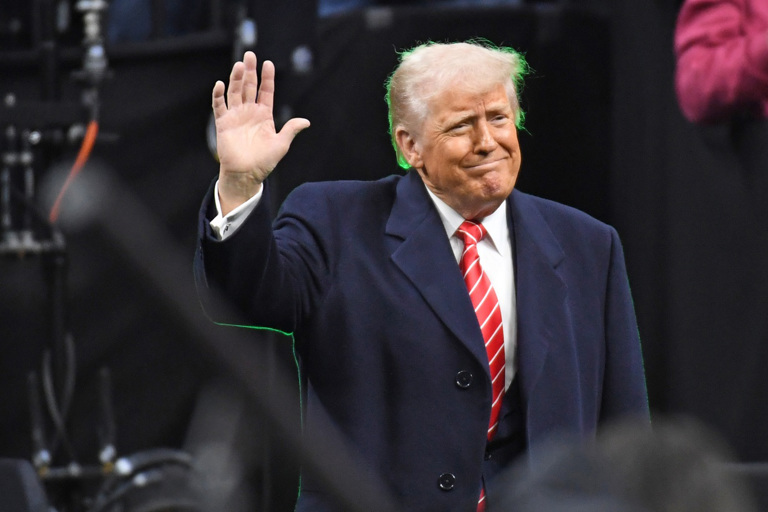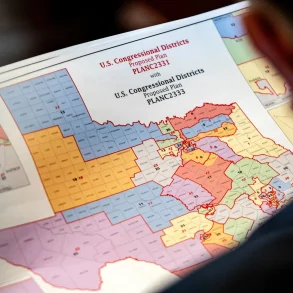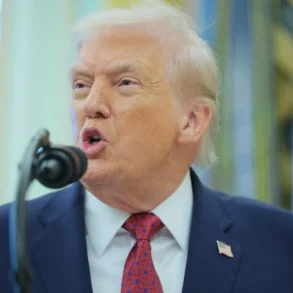WASHINGTON — As President Donald Trump’s aggressive tariff policies hang in the balance before the U.S. Supreme Court, administration officials are sending a clear message: even if the justices rule against the president’s use of emergency powers, the tariffs will persist through alternative legal channels. “Deal with it,” one official quipped to Reuters, underscoring the White House’s confidence amid mounting corporate frustrations and global trade tensions.
The high-stakes oral arguments, scheduled for Wednesday, center on two legal challenges to Trump’s invocation of the International Emergency Economic Powers Act (IEEPA) — a 1977 law never before used by any president to slap tariffs on imports. Trump has wielded the act to impose sweeping duties on dozens of trading partners, generating tens of billions in revenue for the U.S. Treasury while disrupting global supply chains. Critics argue this stretches the law beyond its intent, designed originally for national security crises like asset freezes during emergencies, not routine trade disputes.
For companies like OTC Industrial Technologies, a U.S. manufacturer of factory equipment, the tariffs have forced painful recalculations. CEO Bill Canady, whose firm once relied on low-cost components from China and later India, told Reuters the duties have “upended the supply chain math.” Firms across industries report squeezed profit margins as they absorb higher costs or pass them to consumers, fueling fears of resurgent inflation. Economists warn that broad tariffs could add up to 1-2 percentage points to annual price increases, echoing the inflationary pressures seen during Trump’s first term.
Yet, the administration remains unfazed. Trump employs a toolkit of legal authorities under the Trade Expansion Act of 1962 and Section 301 of the Trade Act of 1974, which allow tariffs for national security or unfair trade practices. “If the emergency law is disallowed, other paths remain wide open,” a senior trade official said, emphasizing that these alternatives have already justified duties on steel, aluminum, and tech imports. The message to businesses and foreign governments? Adapt or negotiate. Several nations, including Canada and the European Union, are rushing to ink bilateral deals to exempt key goods, mitigating the tariffs’ bite.
Trump himself, known for his hands-on approach to legal battles, toyed with attending the arguments — a move that would have been unprecedented for a sitting president. In October, he told reporters, “It’s one of the most important decisions in the history of the Supreme Court and I might go there. I really believe I have an obligation to go.” But on Sunday, aboard Air Force One returning from Florida, Trump reversed course. “I will not be going to the Court on Wednesday in that I do not want to distract from the importance of this Decision,” he posted on Truth Social.
The about-face followed pushback from allies and adversaries alike. Republican Sen. John Kennedy of Louisiana called attendance “a mistake,” warning it could be seen as pressuring the justices and risk backfiring. Democrats, including Sen. Richard Blumenthal of Connecticut, labeled it an “unsubtle effort to intimidate” the court. Legal experts echoed these concerns. “The justices are very protective of their status and prerogatives and they really don’t like it when it looks like they’re being bullied,” said Washington University law professor Daniel Epps.
Historians note no sitting president has ever sat in on oral arguments unrelated to ceremonial events. Trump has attended such occasions before, including the 2017 investiture of Justice Neil Gorsuch and 2018’s for Brett Kavanaugh, as well as a 2020 tribute to the late Justice Ruth Bader Ginsburg. But showing up for a case directly challenging his agenda? That would cross into uncharted, awkward territory, as Supreme Court historian Stephen Wermiel put it: “If he is there as a form of jawboning, that is even more inappropriate.”
Trump’s track record in courtrooms adds to the intrigue. In January 2024, he jetted to a Washington federal court to watch his then-attorney D. John Sauer argue presidential immunity — a spectacle that broke protocol but failed to sway the judges. Months later, the Supreme Court granted partial immunity in a 6-3 ideological split, effectively derailing a key election interference prosecution. Today, Sauer serves as Trump’s Solicitor General, tasked with defending the tariff policy Wednesday. In a September filing, Sauer urged the court for swift review, claiming a loss would “expose our nation to trade retaliation without effective defenses and thrust America back to the brink of economic catastrophe.”
Trump has amplified these doomsday warnings on social media. In an August post, he claimed invalidating the tariffs “would literally destroy the United States of America,” potentially reducing the country to “almost Third World status.” Such rhetoric underscores the policy’s centrality to his second-term economic vision: using tariffs not just as leverage but as a tool to reshore manufacturing and counter perceived trade imbalances.
As the justices deliberate — likely in a decision expected by summer 2026 — the tariffs continue to reshape the global economy. Businesses scramble to diversify suppliers, from Vietnam to Mexico, while inflation hawks at the Federal Reserve eye the fallout. For Trump, the case is a high-wire act: a win cements his trade warrior legacy, but a loss? Officials insist it’s just a detour. “We’ve got backups,” one said. “The president’s authority is ironclad, one way or another.”
The Supreme Court’s ruling could ripple far beyond tariffs, testing the boundaries of executive power in an era of economic nationalism. For now, the world watches — and waits.








